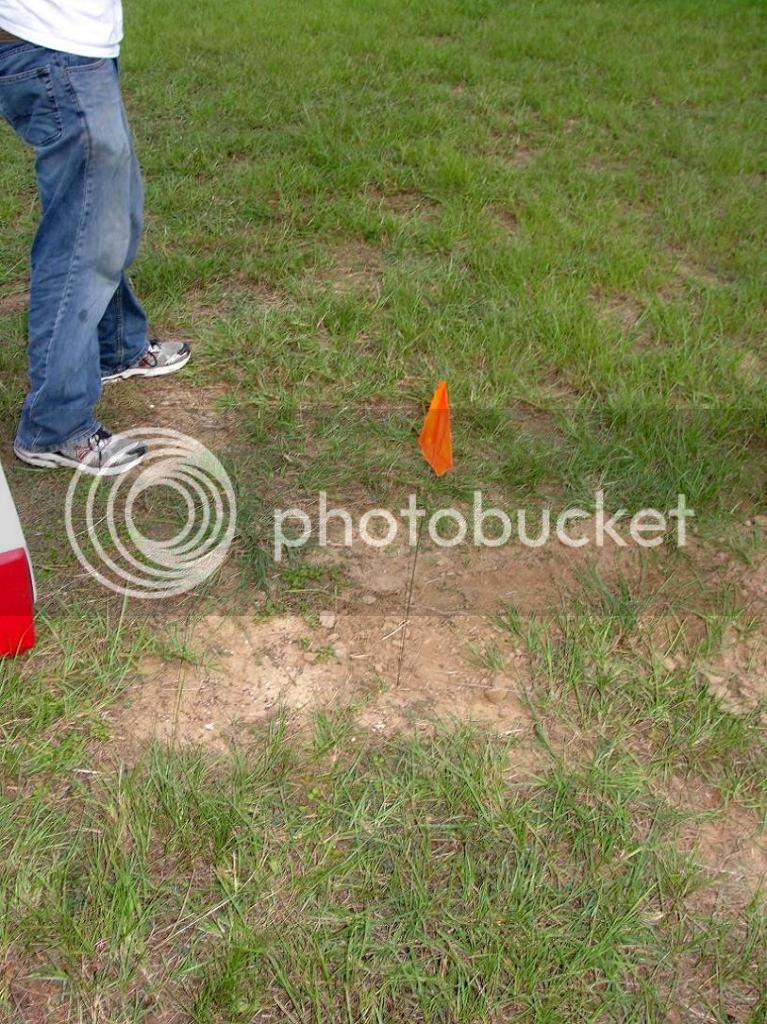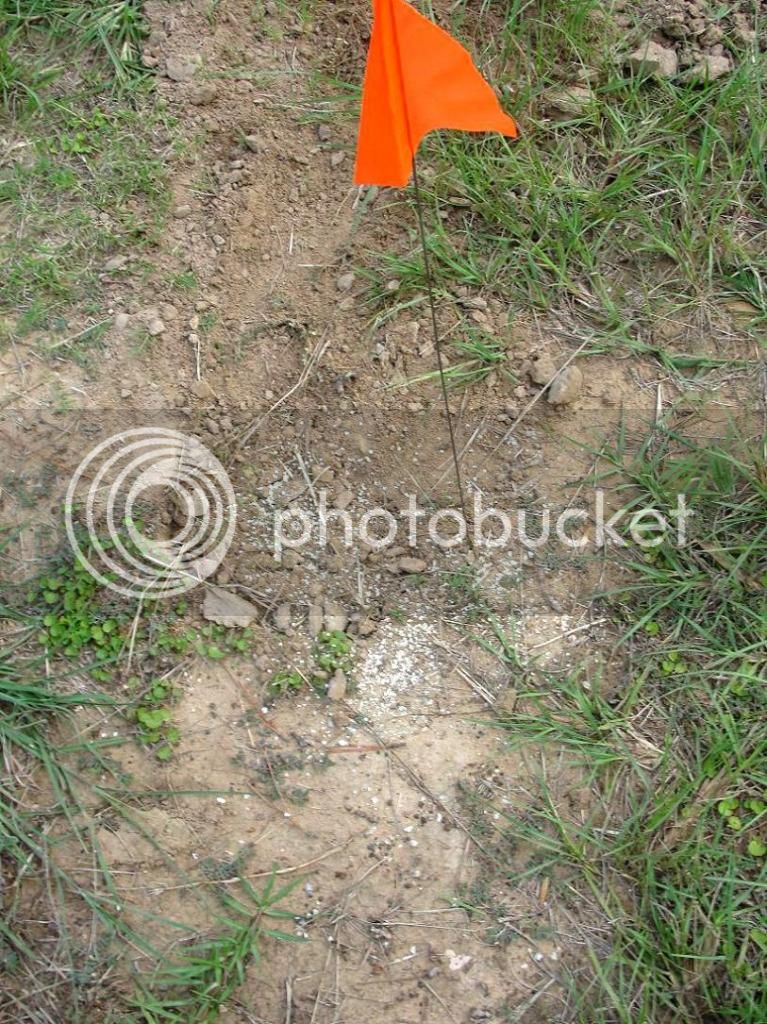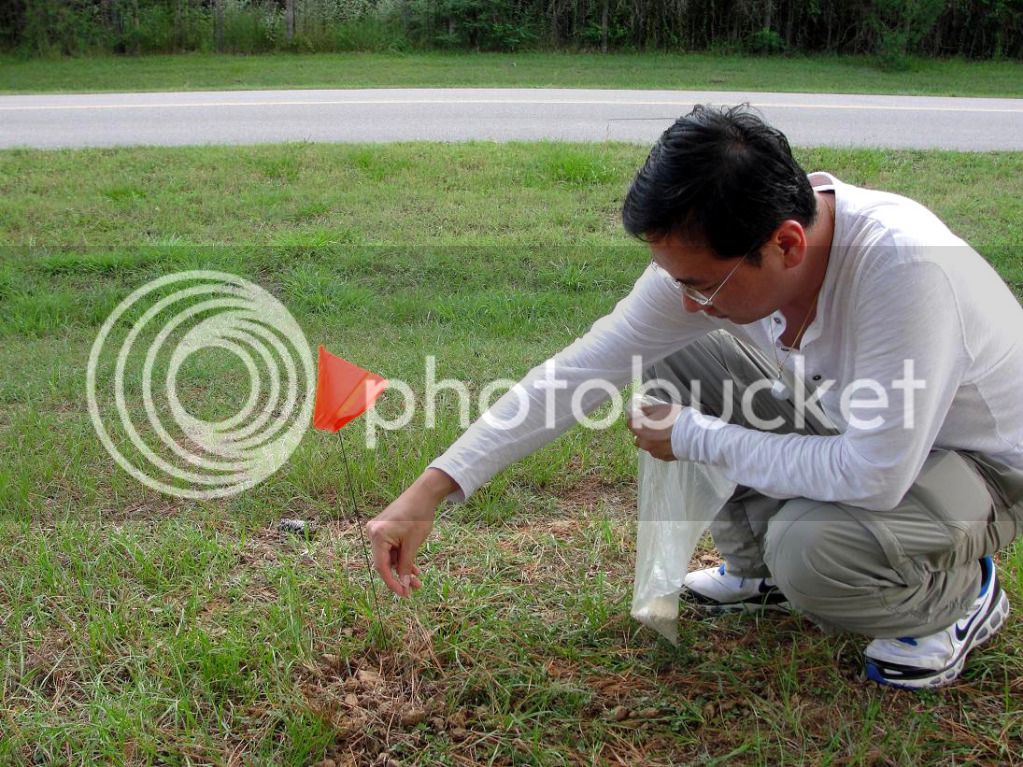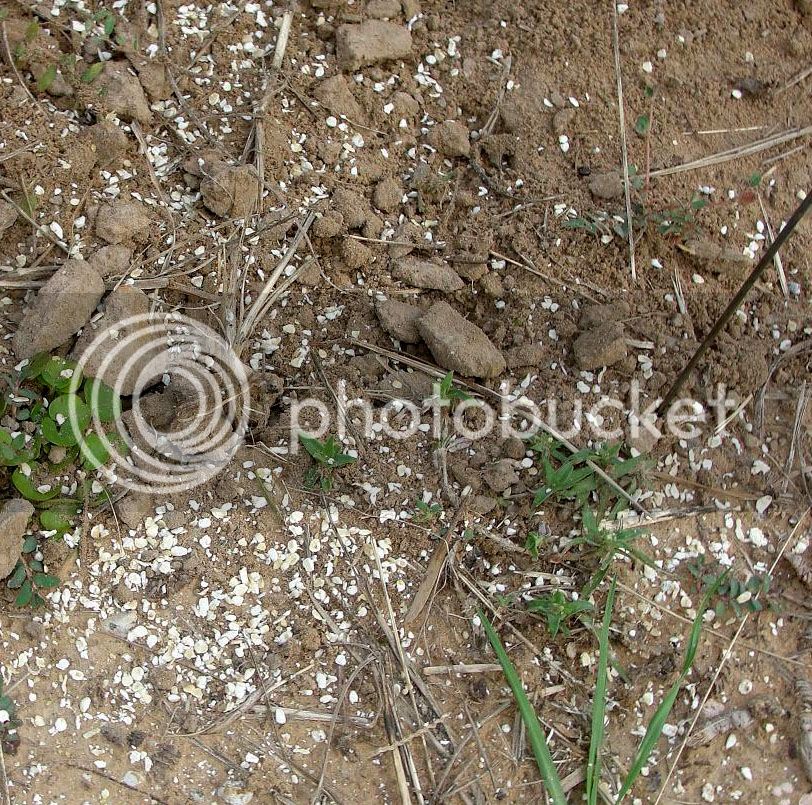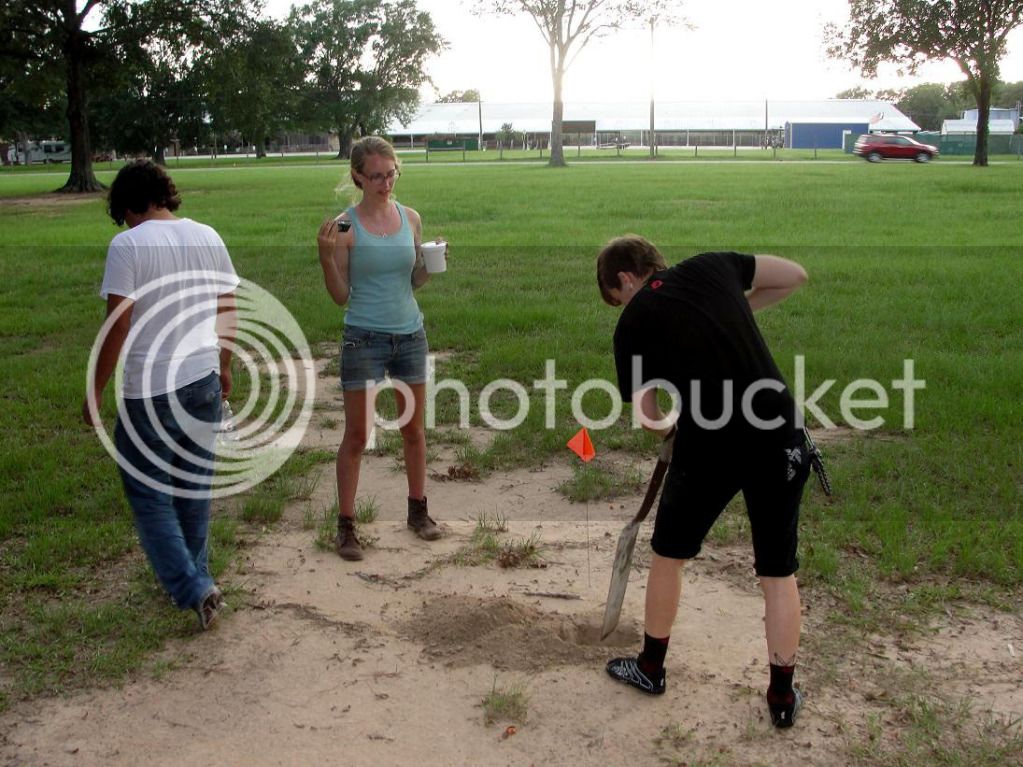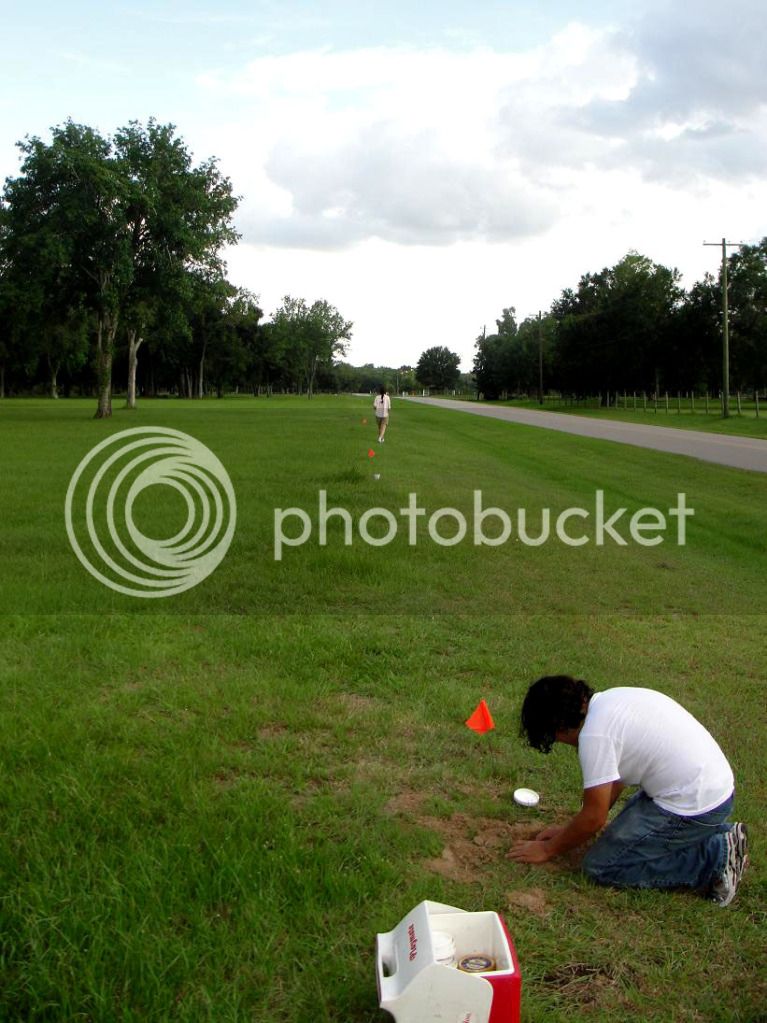For the past few years, I have been helping University of HOuston ento students collecting Pogonomyrmex barbatus (Harvester ants) for their research. Some of the queen ants been able to grow into a nice size colonies after few years. So we have decided to return some colonies back to the place where we collected the queens.
We started to dig up the hole in the afternoon. It wasn't fun doing this under 95F with 80% humidity. A total of 40 holes were dug out.
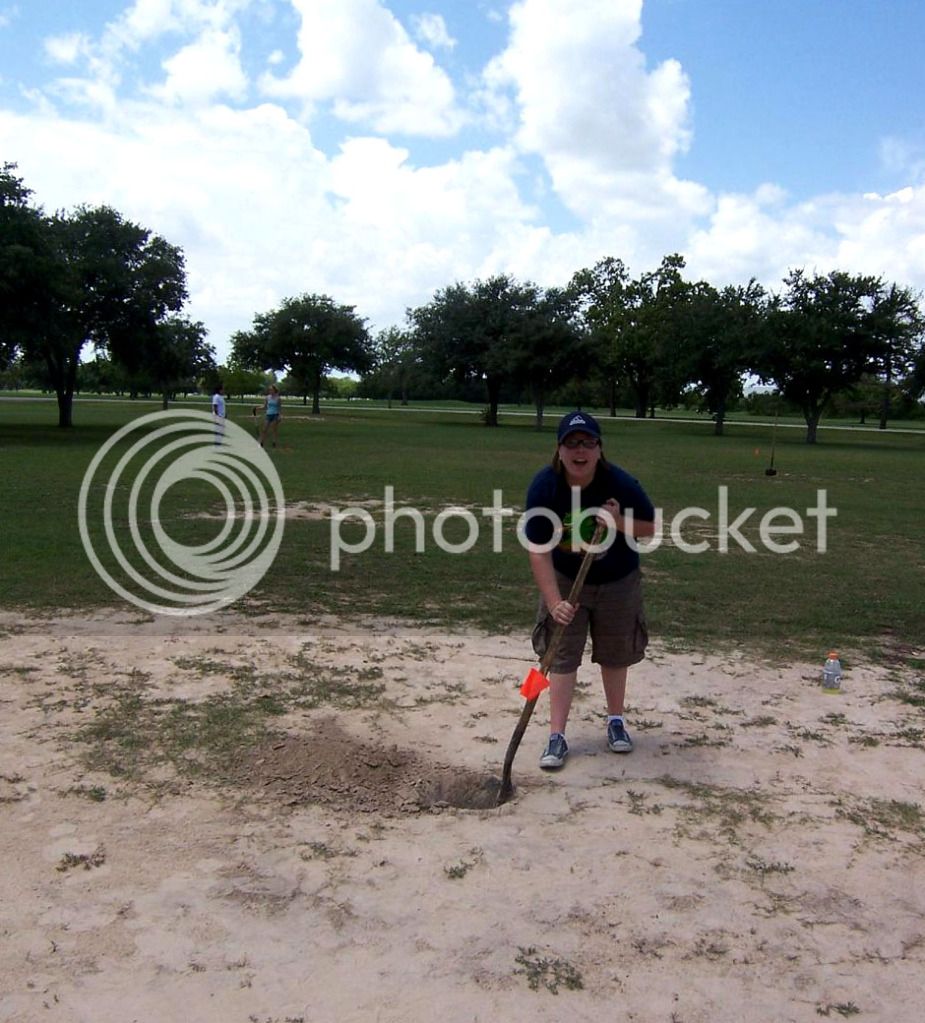
I had the easier tool but still took me a good 15 minute to dig up a hole.
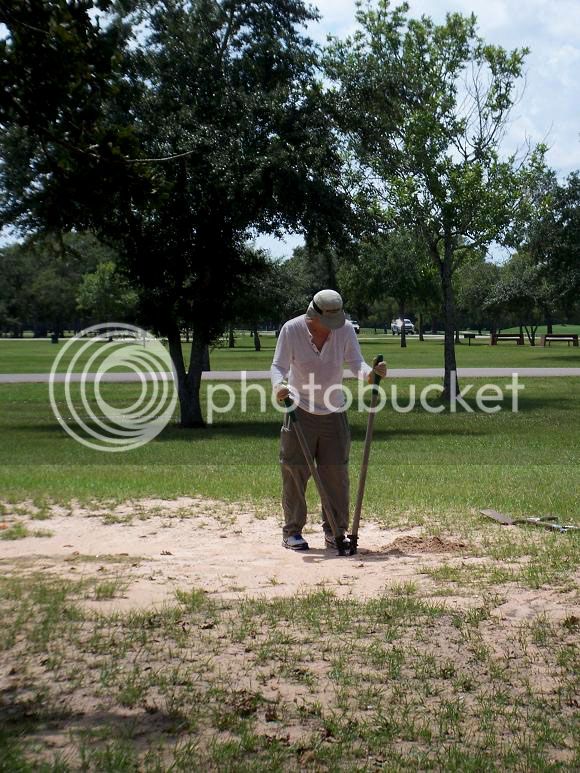
We marked each hole with a flag,, and returning later in the afternoon when the weather is cooler for releasing the colony.
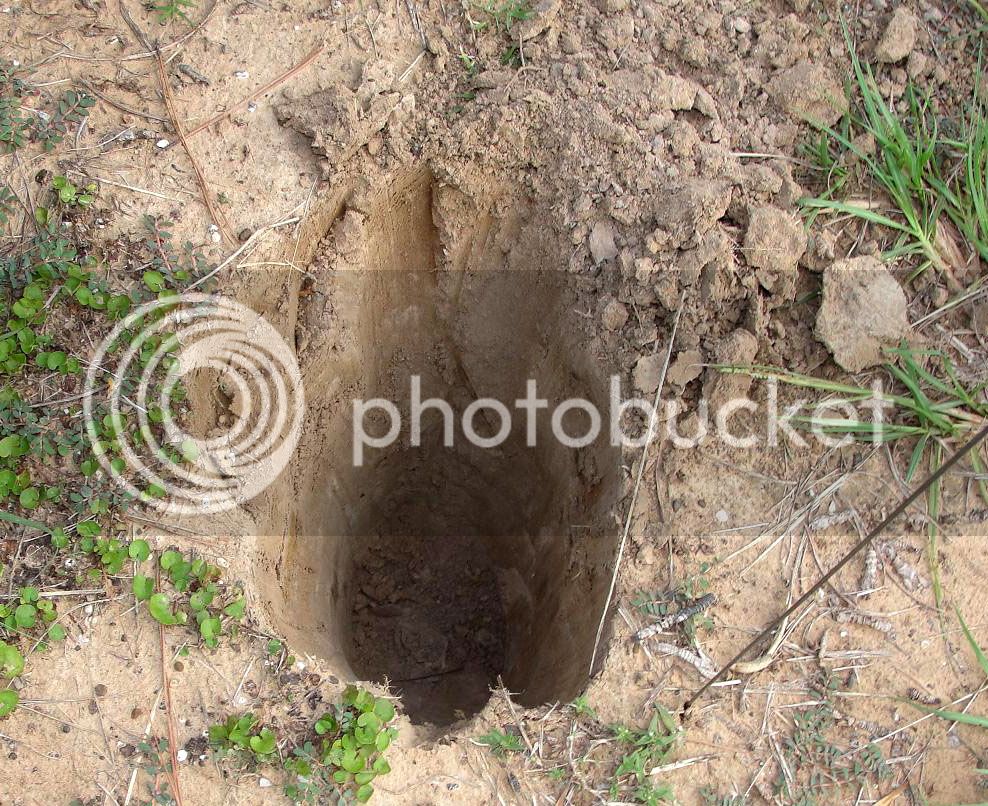
The harvester ant colonies have been transfered into a 20oz soil- filled foam cup a week earlier.
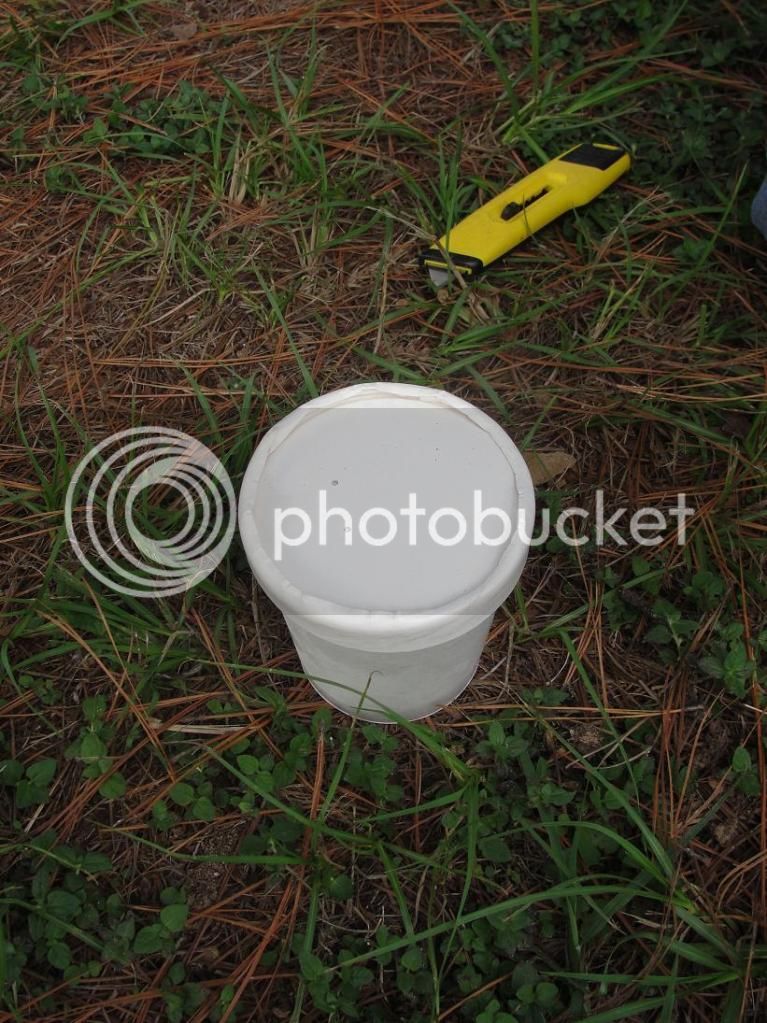
Before placing the container into the hole, a hole is poked through the bottom so it won't accumulate water.
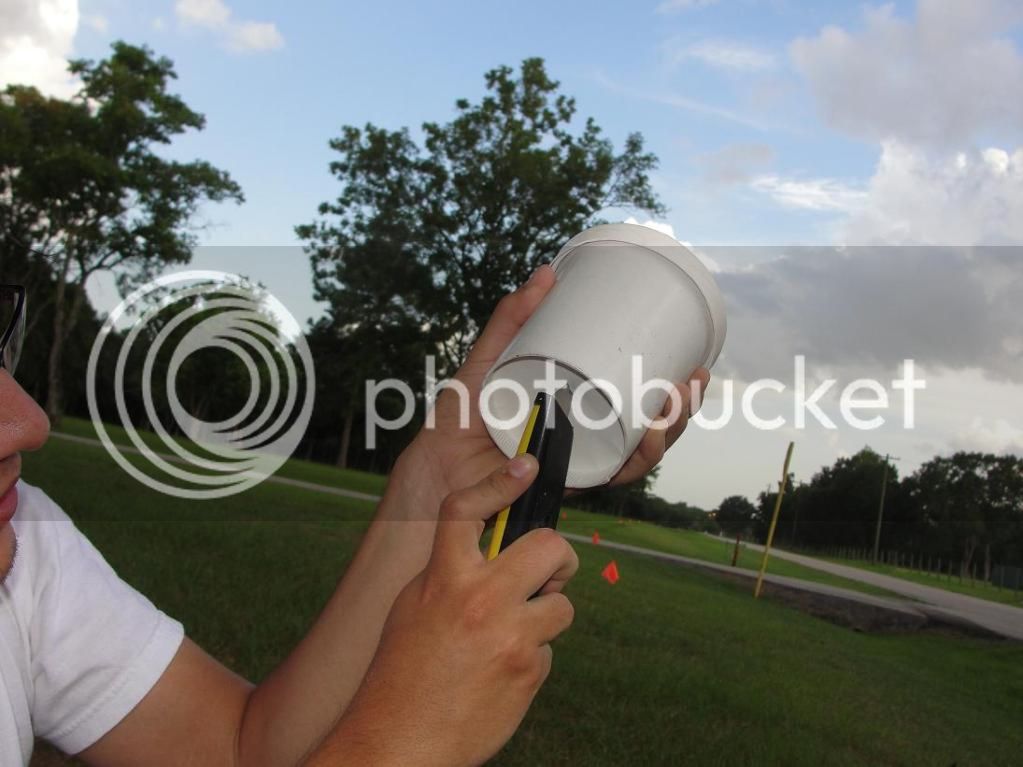
Placing the colony into the hole
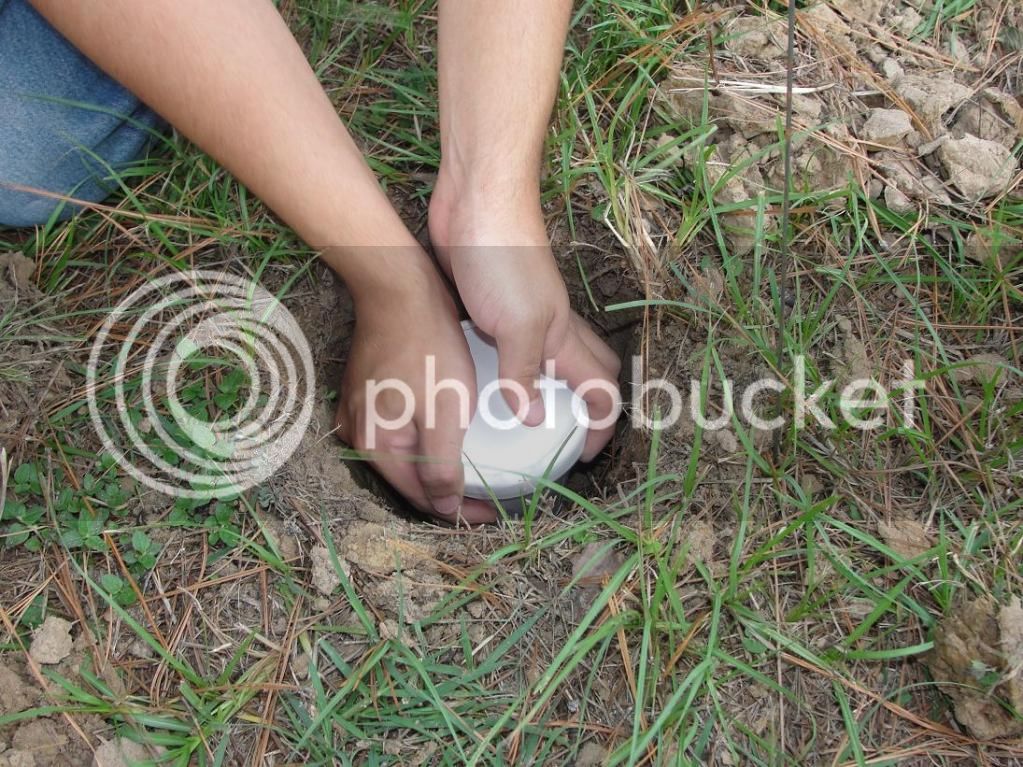
Removing the lid, some harvester workers started to crawl out rather quick (Do not want to get stung by one of these, really painful!)
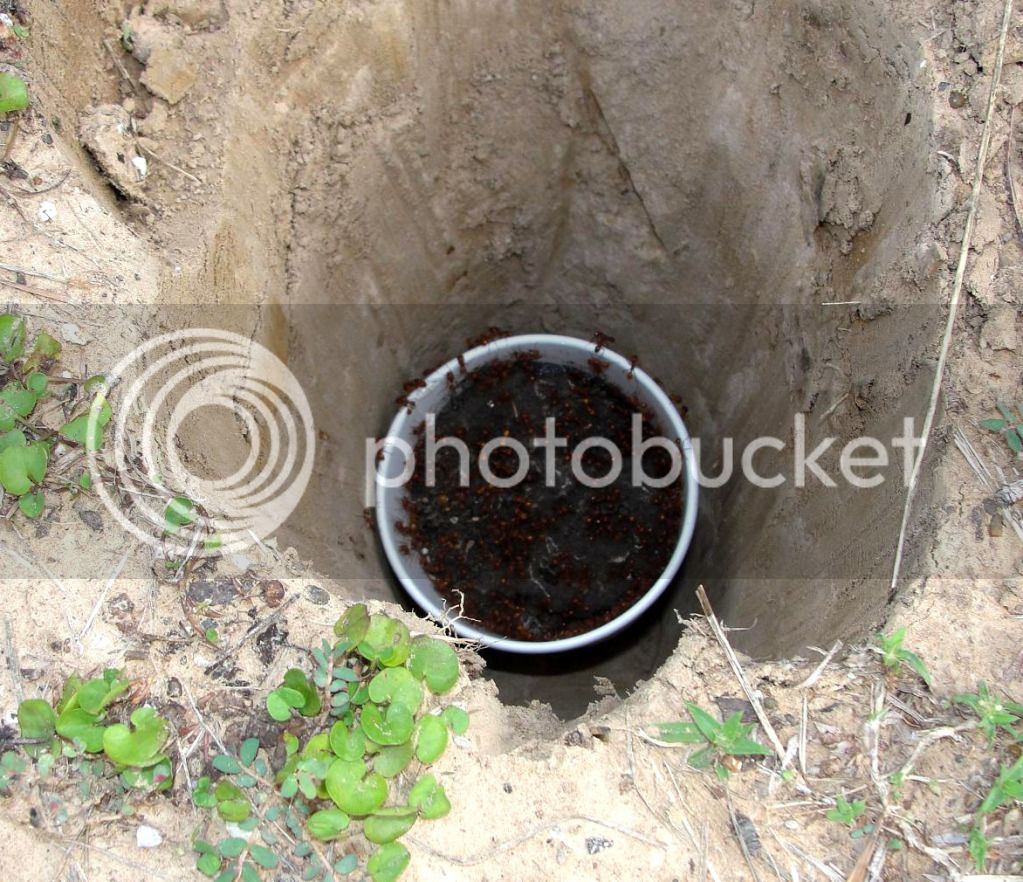
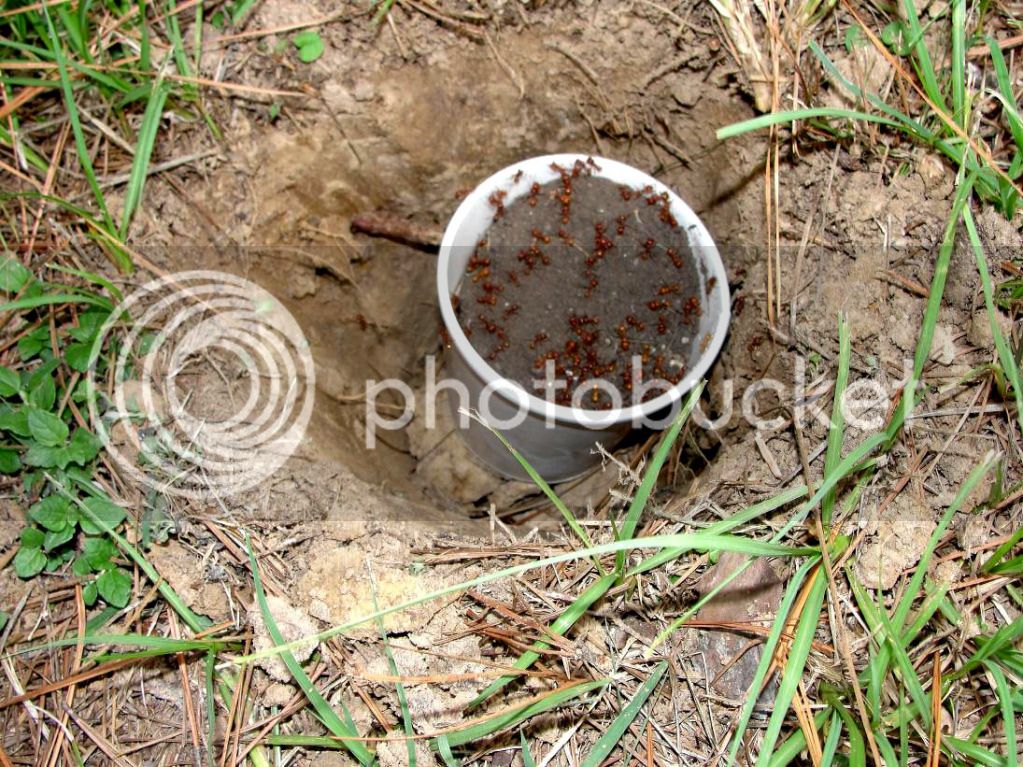
Placing the soil back to the hole
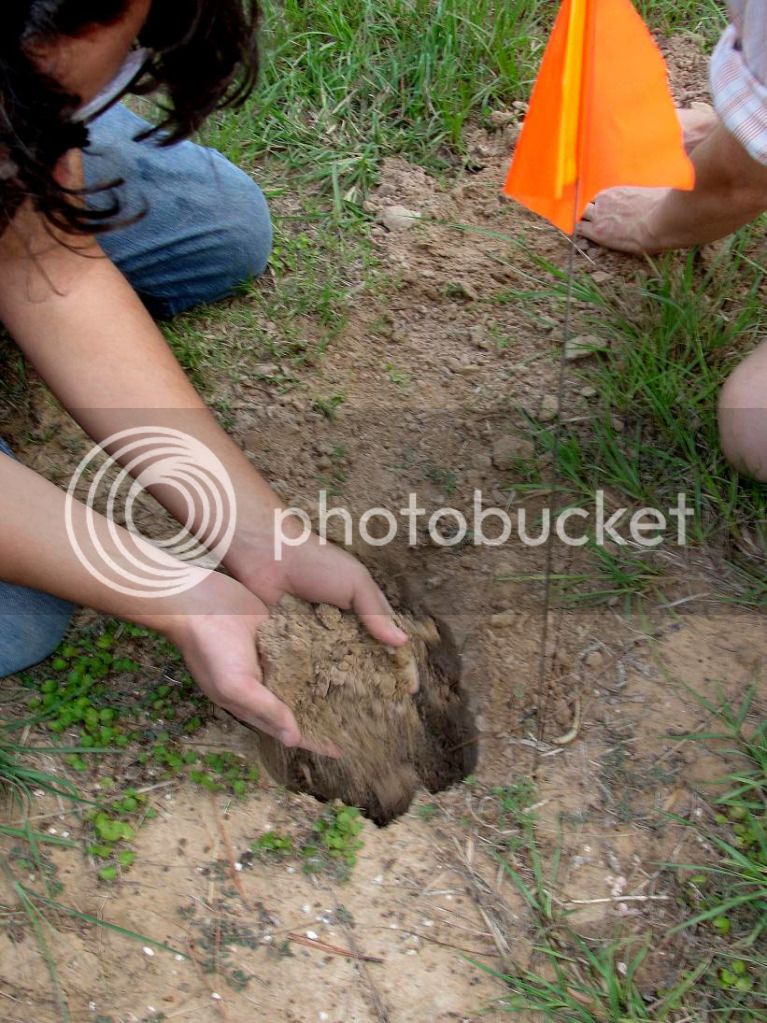

We started to dig up the hole in the afternoon. It wasn't fun doing this under 95F with 80% humidity. A total of 40 holes were dug out.

I had the easier tool but still took me a good 15 minute to dig up a hole.

We marked each hole with a flag,, and returning later in the afternoon when the weather is cooler for releasing the colony.

The harvester ant colonies have been transfered into a 20oz soil- filled foam cup a week earlier.

Before placing the container into the hole, a hole is poked through the bottom so it won't accumulate water.

Placing the colony into the hole

Removing the lid, some harvester workers started to crawl out rather quick (Do not want to get stung by one of these, really painful!)


Placing the soil back to the hole






